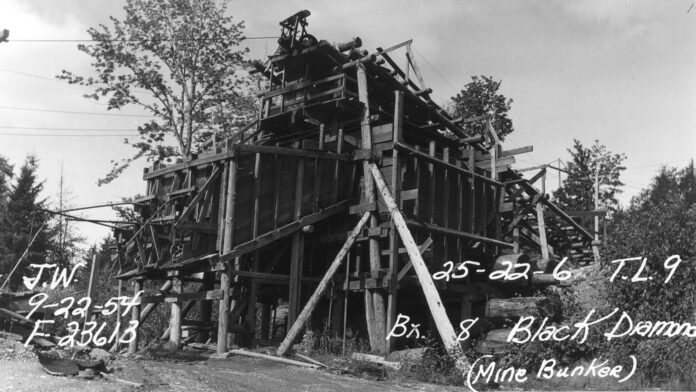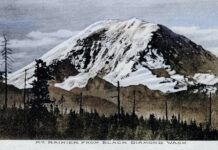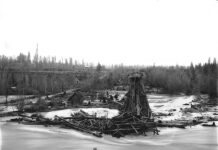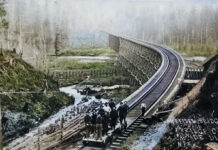In November 1937, Palmer Coking Coal Company (Palmer) announced the opening of the new Danville mine. The coal seams of Danville had witnessed many failed ventures, but finally had an operator worthy of their potential. Danville was located along the Summit-Landsburg Road near the Cedar River.
After major new investments in gangways and tunnels to open additional reserves, Palmer’s mine began producing more coal than ever before. Through the World War II years, Palmer employed between 20 and 30 miners as new operations on nearby seams were advanced. A 1943 state report described mining operations as the chute and pillar method, powered by electric haulage with a Forrester washing jig. Coal was shipped by dump truck and rail. The rail line followed the route of today’s Summit-Landsburg Road. Summit was the original name of Four Corners.
In 1944 King County built a road called the Morris Mine Connection to service a new mine opening about 400 feet south of the Cedar River. Today that road is known as S.E. 253rd Street. In 1949, Palmer completed purchase of the surface property from a receiver appointed to clean up the affairs of the old Danville Coal Company. Mining continued southerly and in the early 1950s new slopes were driven from the Kent-Kangley side of the hill into the renamed Landsburg seams.
By then, coal production from Landsburg ramped up to more than 40,000 tons per year.
Palmer’s customers included state prisons, University of Washington, Renton Housing Authority, plus thousands of homeowners and small businesses who burned stoker coal in furnaces, or nut and lump coal in stoves and fireplaces. With two other underground mines and one surface, Palmer became King County’s top coal producer with nearly 90,000 tons of annual production. The company’s coal miners were affiliated with the United Mine Workers of America, earning union wages with benefits and pensions.
This photograph of the Landsburg coal bunkers was taken on Sept. 22, 1954 by the King County Assessor for property tax assessments. The bunkers were used to initially process and temporarily store coal before it was trucked to Black Diamond for washing. These bunkers were located east of 262nd Ave. S.E., and north of Kent-Kangley, where the road bends slightly south. After a new mine on the adjacent Rogers seam was opened, the Landsburg mine closed in 1961, following 24 years of mining producing 663,000 tons of coal. Rogers No. 3 closed in December 1975, marking the end of underground coal mining in Washington State.







